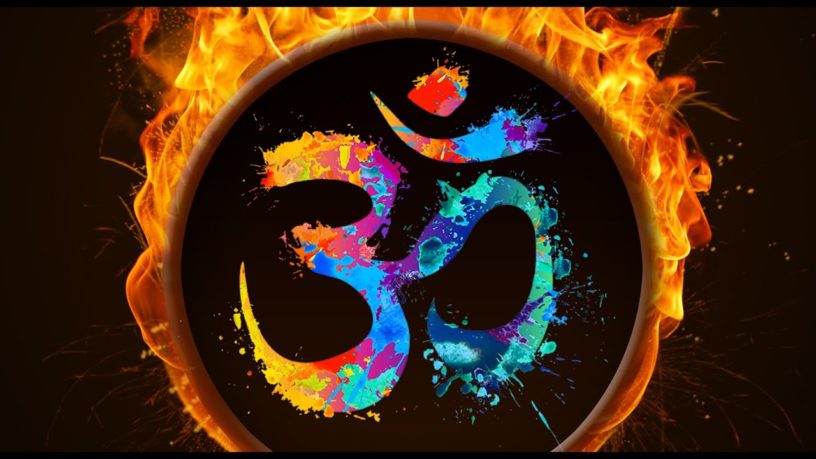Pt. Dr. Umesh Persad
Spiritual Leader, Swaha Gyaan Deepak Kirtan Mandali
Kabir Das, a 15th century Indian mystic, poet and saint, advises us on how to deal with life and death. He tells the story about a thief moving through a village. In this village, there is a house with a small cot made out of sandalwood. On the cot is a bride who is waiting for her friend to arrive and adorn her with bridal jewellery and makeup. While she is waiting, the God of Death arrives. The bride sees him and she begins to cry as she realises that she is going to die. She passes away and four men arrive and remove the cot with the deceased body. They take her to the funeral ground and the fire is lit. The body is covered in smoke from all sides and returns to the elements. Kabir is saying that at some point this relationship with the world will come to an end. The point he makes is that we all think about beginnings such as marriage but no one ever really thinks about the end, death.
In this analogy, the village represents the world that we live in. It is known as samsaara, jagat or maayaa. In Sanskrit, every word describes the quality of an object. Samsaara means ‘to go around’ or ‘to move back and forth’. The nature of the world is to move in one direction and then the other, back and forth. Therefore, if we are looking for any permanent happiness, it stands to reason that it cannot be found in this world that just moves back and forth. Jagat means ‘to always keep moving’. You cannot find peace or be settled in a world that is always changing. Maayaa is the illusion of individuality. The world never stays the same. Kabir says, understand the nature of the world and understand the nature of life.
The thief in the village represents death, mrityu. Death means ‘to dissolve’. Some people think, when we die, everything is gone. ‘Dissolve’ indicates that there is some substance out of which we emerged and at the point of death, we return to that substance, like salt in water. Death is to be understood as a dissolving. The bride, of which Kabir speaks, represents the body-mind complex. In Sanskrit, body is ‘deha’, which also means ‘a covering’. The body is a covering for some deeper essence inside. We make the mistake of thinking we are the body. The bride is waiting on the groom, who represents the Supreme Self, the true nature that exists everywhere.
In Hinduism, the principles of existence are personified so that we can relate to them. The God of Death, personified as Yamraj, has seven names, according to scriptures: Yama, Dharmaraja, Mrityu, Antaka, Vaivasvat, Kaal and Sarvapraanahaara. Yama means ‘restraint’; in death, the mind, senses and body are restrained. Dharmaraja means ‘the Lord of Righteousness’; it is only when death nears that we think about the kind of life we have lived, or did not live. Mrityu means ‘to dissolve’. Antaka means ‘he who ends’; this particular life, this dream, comes to an end. Vaivasvat means ‘coming from or belonging to the sun’; death means returning to that Supreme Sun that is everywhere. Kaal is ‘time’; when our time on this earth ends, the body dies. Sarva means ‘all’; praana is ‘the life breath’ and haara is ‘to take away’. Therefore, Sarvapraanhaara means ‘He who takes away the life breath’. The God of Death’s wife’s name, Dhoomorna, is similarly significant: dhoom means ‘smoke’ and orna is ‘a covering’. When the body is cremated, it is covered in smoke.
At the end of life, we are judged by the actions we have performed and then we move on to other lives to continue learning. In Sanaatan Dharma, there are four goals to life: artha, dharma, kaam and moksha. The four men, who remove the deceased body to the cremation ground, represent these four goals. At death, we are judged on those four areas of life: dharma or righteousness and values; artha or economic values and material wealth; kaam or desires; and moksha, liberation or spiritual values. What was the extent of our development in this life? Did we live in service to others? What did we achieve in terms of our spiritual growth? Are we peaceful, calm and satisfied?
In Yoga Vasistha, it is said there are four guards to the gates of liberation: satsangh or good association; aatmaa vichaar or self enquiry: the true knowledge of the self that we must obtain; santosh, contentment; and peace, shanthi: we realise that we are more than this mind and body. Kabir says, fulfil your responsibilities in life but don’t expect true happiness from worldly objects. In grief, we realise that it is good to serve and help others but the journey changes from an outward focus to an inward search for the true self.
A special satsangh broadcast on May 17, 2020 in memory of Dr. Vishna Rasiah, a consultant neonatologist at Birmingham Women’s and Children’s Hospital, United Kingdom, who unfortunately passed away due to the Covid-19 virus. Swaha expresses its condolences to the family.



